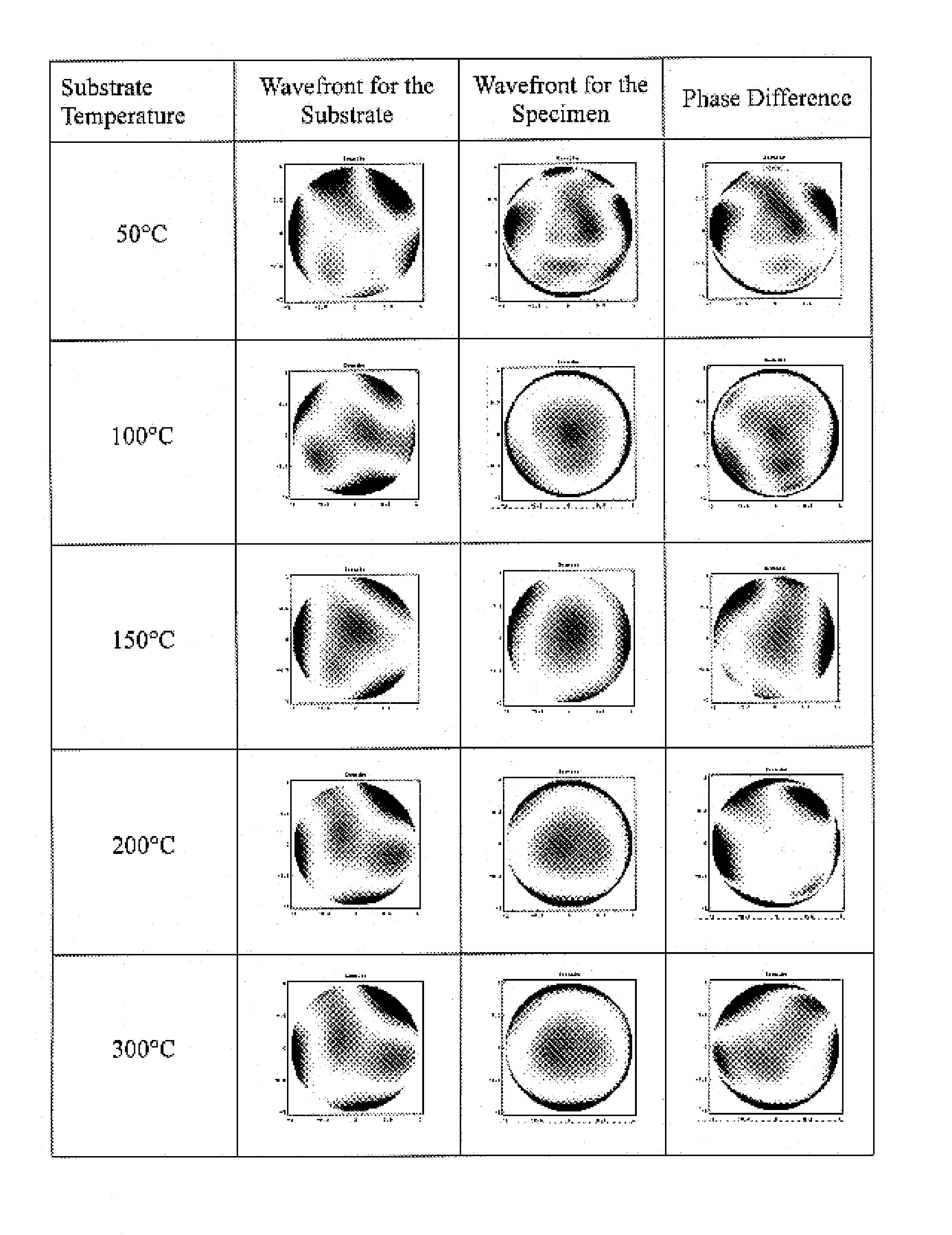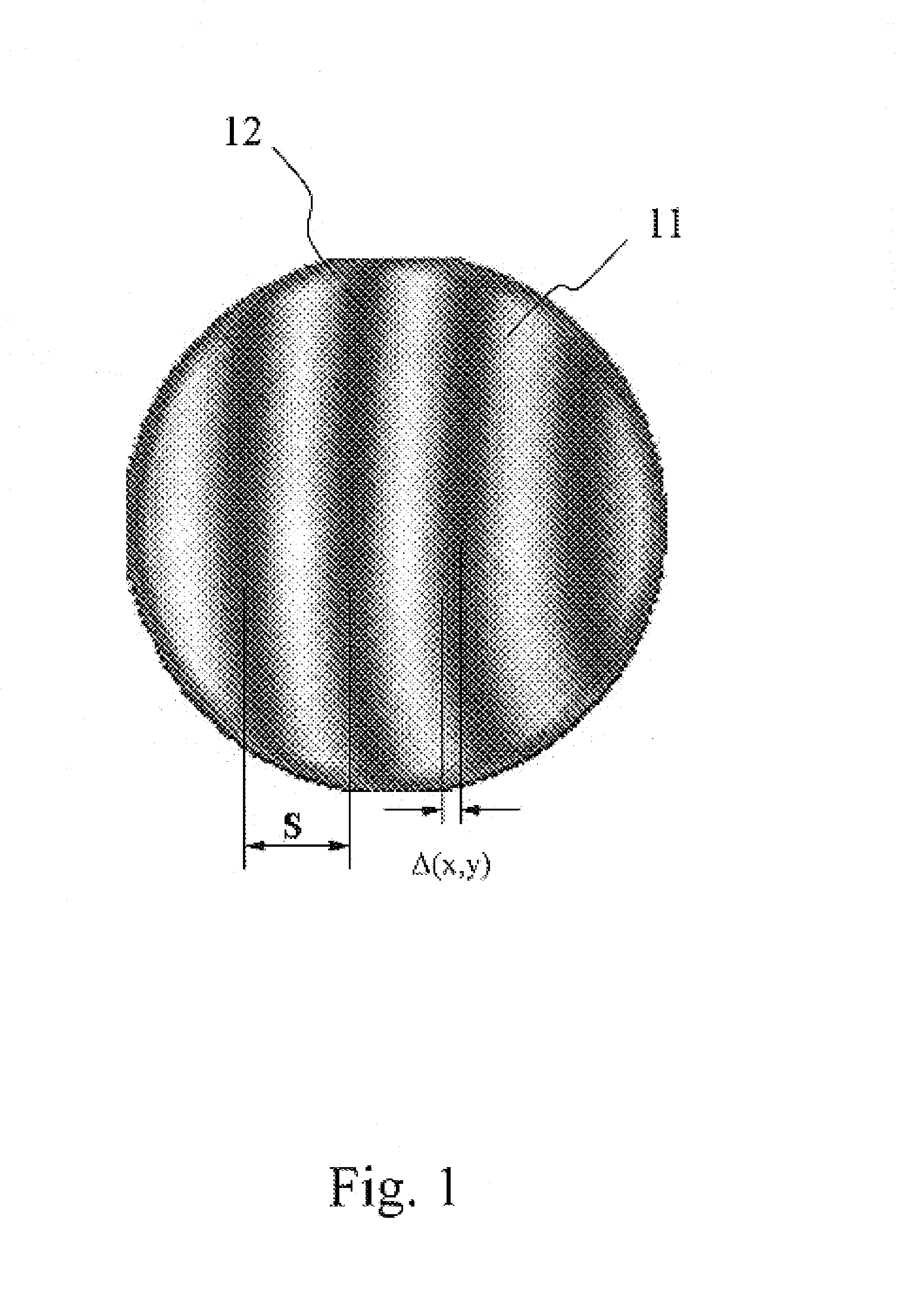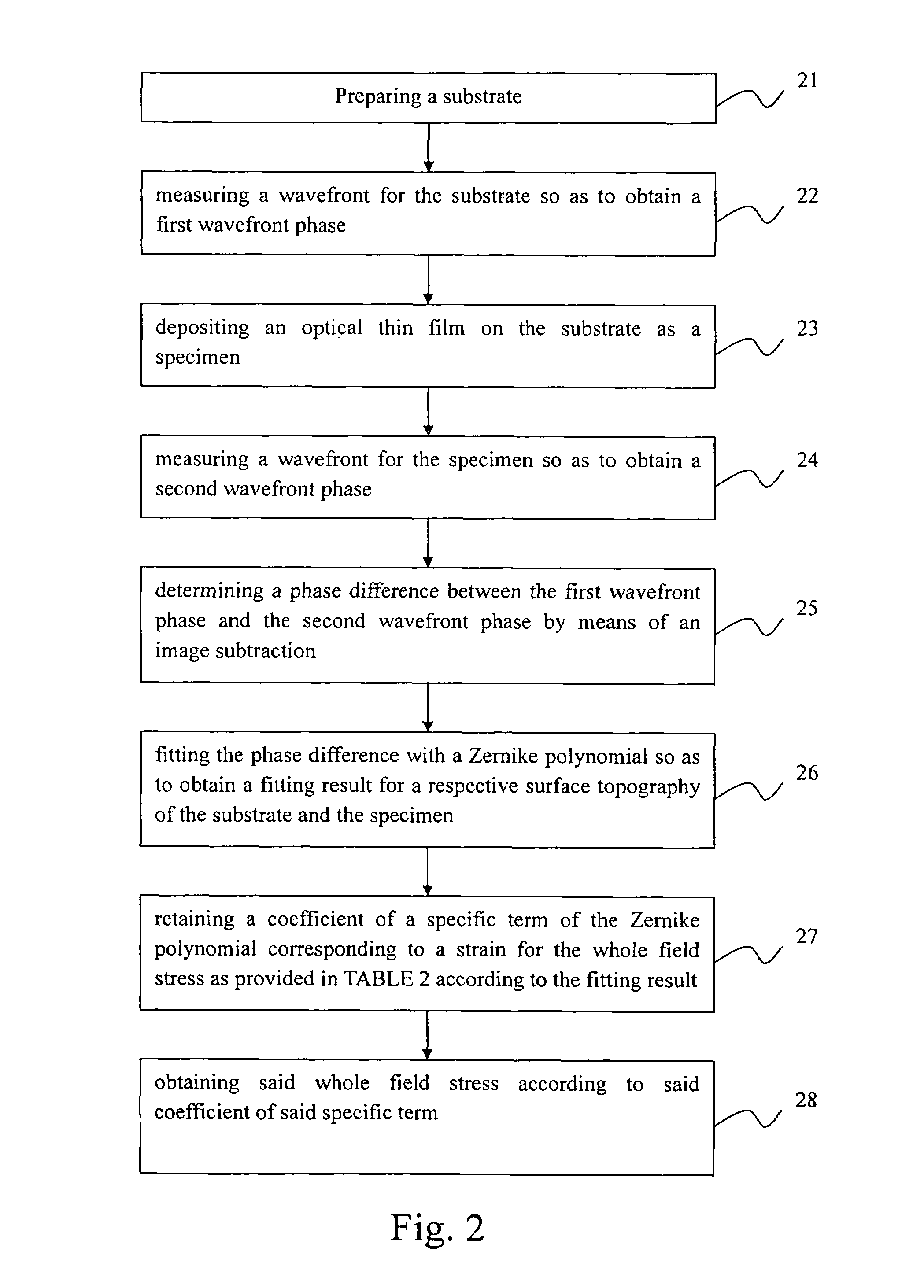Method for whole field thin film stress evaluation
a stress evaluation and thin film technology, applied in the direction of force measurement by measuring optical property variation, force/torque/work measurement apparatus, instruments, etc., can solve problems such as ghost image production, optical system performance regression, and failure to opera
- Summary
- Abstract
- Description
- Claims
- Application Information
AI Technical Summary
Problems solved by technology
Method used
Image
Examples
Embodiment Construction
[0032]The present invention will now be described more specifically with reference to the following embodiments. It is to be noted that the following descriptions of preferred embodiments of this invention are presented herein for purpose of illustration and description only; it is not intended to be exhaustive or to be limited to the precise form disclosed.
[0033]First, the theoretical basis for the method according to the present invention is provided.
[0034]The thin film stress that is extremely produced while a thin film is deposited on a substrate typically results from the deformation limitation occurring at the interface of the substrate and the thin film, where the magnitude thereof depends on the combination of the substrate-film structure as well as the method adopted for deposition. There would be a lot of voids or cracks produced at the interface of the thin film and the substrate, and even the thin film would be easily peeled off from the substrate, if the thin film stres...
PUM
| Property | Measurement | Unit |
|---|---|---|
| thickness | aaaaa | aaaaa |
| diameter | aaaaa | aaaaa |
| wavelength | aaaaa | aaaaa |
Abstract
Description
Claims
Application Information
 Login to View More
Login to View More - R&D
- Intellectual Property
- Life Sciences
- Materials
- Tech Scout
- Unparalleled Data Quality
- Higher Quality Content
- 60% Fewer Hallucinations
Browse by: Latest US Patents, China's latest patents, Technical Efficacy Thesaurus, Application Domain, Technology Topic, Popular Technical Reports.
© 2025 PatSnap. All rights reserved.Legal|Privacy policy|Modern Slavery Act Transparency Statement|Sitemap|About US| Contact US: help@patsnap.com



